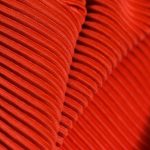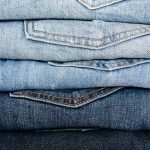Did you know that upholstery fabrics with higher abrasion resistance can last up to five times longer in daily use? If you’re choosing between velvet and corduroy, understanding how their material makeup affects durability is essential. Velvet offers a luxurious feel, but corduroy’s textured weave might better withstand wear and tear. To make the right decision for your space, you’ll want to take into account factors beyond just looks.
Table of Contents
Key Takeaways
- Corduroy’s ribbed weave offers superior abrasion resistance compared to velvet’s delicate cut pile, making it more durable for heavy use.
- Velvet’s soft, plush texture is more prone to pressure marks, creases, and wear over time than corduroy.
- Corduroy typically uses stronger fibers, enhancing its resilience and longevity relative to velvet.
- Velvet requires gentle, professional cleaning, while corduroy tolerates vacuuming and spot cleaning, easing maintenance demands.
- Although velvet has a higher upfront cost, corduroy provides a more cost-effective, durable upholstery option for high-traffic areas.
Material Composition and Its Impact on Durability
The materials used in velvet and corduroy play a big role in how durable each fabric is. When you look at fiber strength, both fabrics can vary depending on the fibers chosen, such as cotton, polyester, or blends.
Generally, corduroy often uses stronger fibers, which gives it an edge in durability. The weave patterns also considerably impact durability; velvet features a cut pile weave that creates a smooth surface but can be more prone to wear.
Corduroy’s distinctive ribbed weave, with raised cords, tends to withstand abrasion better. So, when you’re deciding between the two for upholstery, consider how fiber strength and weave patterns influence how each fabric holds up to daily use and stress over time.
Texture Differences Influencing Wear and Tear
You’ll notice velvet has a smooth, plush feel, while corduroy features a ribbed texture that adds dimension.
These differences directly affect how each fabric handles wear and tear over time. Understanding this can help you choose the right upholstery for your lifestyle.
Velvet’s Smooth Texture
Velvet’s smooth texture creates a luxurious feel that many people find irresistible for upholstery. When you run your hand over velvet, you immediately notice its soft, smooth feel, which adds a touch of elegance to any room.
This fabric’s luxury appeal comes from its dense pile and fine fibers, making it visually striking and inviting to touch. However, that very smoothness can make velvet more prone to showing wear, like crushing or marking, especially in high-traffic areas.
You’ll need to handle it with care, as spills and stains can settle quickly into its plush surface. Despite this, if you want upholstery that combines comfort with a rich look, velvet’s smooth texture offers a unique balance of softness and sophistication.
Corduroy’s Ribbed Surface
Corduroy’s ribbed surface stands out for its distinctive texture, which directly impacts its durability and maintenance. When you run your hand over corduroy, you immediately notice its pronounced ribbed appearance, creating a unique tactile experience that velvet lacks.
These ribs, or wales, give corduroy a structured feel, making it more resistant to minor abrasions and everyday use. You’ll find that the raised ribs can trap dust and debris more easily, so regular vacuuming is essential to keep it clean.
However, unlike smooth fabrics, corduroy’s texture hides small stains and wear better. Understanding this ribbed surface helps you appreciate why corduroy requires slightly different care but offers a tactile richness that adds character to your upholstery.
Texture Impact on Durability
Although both velvet and corduroy offer appealing textures, their differences greatly affect how well they hold up over time.
When you choose velvet, you get a smooth, plush tactile experience that feels luxurious but can be prone to crushing and showing wear quickly. Velvet’s texture resilience is lower, so it may develop bald spots or flatten with heavy use.
On the other hand, corduroy’s ribbed texture adds durability by hiding minor wear and resisting abrasion better. Its raised cords provide a sturdier surface that maintains its look longer, even with frequent use.
Comparing Resistance to Deformation and Abrasion
When you choose upholstery fabric, understanding how it handles wear and tear is essential.
Velvet and corduroy differ significantly in deformation resistance. Velvet’s smooth surface can show pressure marks and creases more easily, while corduroy’s ribbed texture helps it maintain shape under stress.
Velvet shows pressure marks easily, while corduroy’s ribbed texture resists deformation and maintains shape.
Abrasion testing reveals corduroy generally outperforms velvet in resisting surface wear, thanks to its thicker, sturdier fibers. Velvet’s delicate pile may wear down faster with heavy use, leading to visible thinning.
If you want upholstery that stays looking fresh despite frequent contact, corduroy’s superior abrasion resistance and deformation resistance make it a practical choice.
However, velvet’s softness appeals when wear is lighter, but you’ll need to be mindful of its sensitivity to pressure and friction.
Cost Considerations Related to Fabric Longevity
Because fabric longevity directly impacts replacement frequency, you should consider how cost aligns with durability when choosing upholstery.
Velvet often comes with a higher upfront price, but its luxurious feel might be worth the investment if you prioritize aesthetics.
Corduroy, generally more affordable, offers strong resistance to wear, making it a cost-effective option for heavy use.
When evaluating cost effectiveness, think beyond the initial purchase. A fabric that lasts longer means fewer replacements, saving you money over time.
By viewing your upholstery as a long term investment, you can balance price with expected durability.
This way, you guarantee your furniture remains attractive and functional without frequent, costly updates.
Choosing wisely now prevents unexpected expenses down the road.
Maintenance Requirements and Practicality
Since maintaining upholstery can be time-consuming, you’ll want to contemplate how velvet and corduroy differ in care requirements.
Velvet demands gentle cleaning methods to preserve its soft pile; spot cleaning with mild detergent and professional steam cleaning are often recommended. You’ll need to avoid harsh scrubbing to prevent crushing the fabric’s texture.
On the other hand, corduroy is more forgiving—you can usually use a vacuum with a brush attachment to remove dust and spot clean with moderate solutions. Its ridged weave hides minor stains better, making fabric care easier day-to-day.
However, corduroy may attract lint and pet hair, requiring more frequent vacuuming. Overall, velvet calls for more delicate attention, while corduroy offers practicality if you prefer lower-maintenance upholstery.
Suitability for Various Upholstery Applications
Understanding how velvet and corduroy differ in upkeep naturally leads to contemplating where each fabric performs best. Velvet suits formal upholstery styles like elegant sofas or accent chairs, adding luxury and softness. Corduroy, with its textured durability, thrives in casual settings such as family rooms or kids’ furniture, offering comfort and resilience. Choosing the right fabric application depends on your lifestyle and aesthetic goals.
| Upholstery Style | Velvet | Corduroy |
|---|---|---|
| Formal | Rich, smooth, elegant | Less common, can feel heavy |
| Casual | Prone to wear, needs care | Durable, cozy, easy to clean |
| High-traffic Areas | Less ideal, shows wear quickly | Ideal, withstands frequent use |
You’ll find matching fabric applications guarantees your furniture stays both stylish and practical.
Evaluating Quality Indicators for Velvet and Corduroy
When you evaluate velvet and corduroy for upholstery, focus on key quality indicators like fabric weight, weave tightness, and fiber content.
Heavier fabrics with tight weaves generally offer better fabric longevity, resisting wear and tear over time. Velvet’s dense pile should feel smooth and plush, while corduroy’s ribs must be evenly spaced and firm to the touch.
Opt for heavier, tightly woven velvet and corduroy for lasting softness and durability in upholstery.
Check fiber content too; natural fibers like cotton provide breathability, while synthetic blends often enhance durability.
Don’t overlook aesthetic appeal—choose velvet with a rich, consistent color and corduroy with well-defined wales to complement your style.
Frequently Asked Questions
Can Velvet or Corduroy Be Safely Used in Homes With Pets?
You can use pet friendly options like corduroy, which handles wear better and is easier to clean. Velvet looks luxurious but demands more fabric maintenance, so it’s less practical if your pets scratch or shed a lot.
How Do Velvet and Corduroy Fabrics Respond to Sunlight Exposure?
You know what they say, “Don’t judge a book by its cover.” Velvet’s prone to sunlight fading, while corduroy offers better UV resistance. So, if sunlight exposure’s high, corduroy’s the safer choice for your upholstery.
Are There Eco-Friendly Options Available for Velvet or Corduroy Upholstery?
You can find eco-friendly velvet and corduroy upholstery made from organic materials like organic cotton or recycled fibers. These options often focus on sustainable production, helping you choose stylish, durable fabrics that are kinder to the planet.
Which Fabric Offers Better Comfort During Different Seasons?
When it comes to seasonal comfort, you’ll find corduroy offers better fabric breathability, keeping you cool in summer and warm in winter. Velvet’s plush feel suits colder months but lacks breathability, so it’s hit or miss year-round.
Do Velvet and Corduroy Fabrics Retain Color Well Over Time?
You’ll notice velvet has good dye stability but can show color fading if exposed to direct sunlight frequently. Corduroy generally retains color better over time due to its sturdy weave and resilient dye properties.
- How to Care for Your Tie-Dyed Garments to Make Them Last - July 13, 2025
- What Is Plangi and Tritik? Exploring Indonesian Resist Dyeing - July 13, 2025
- How to Use Tie-Dye to Create Unique Home Decor - July 13, 2025






